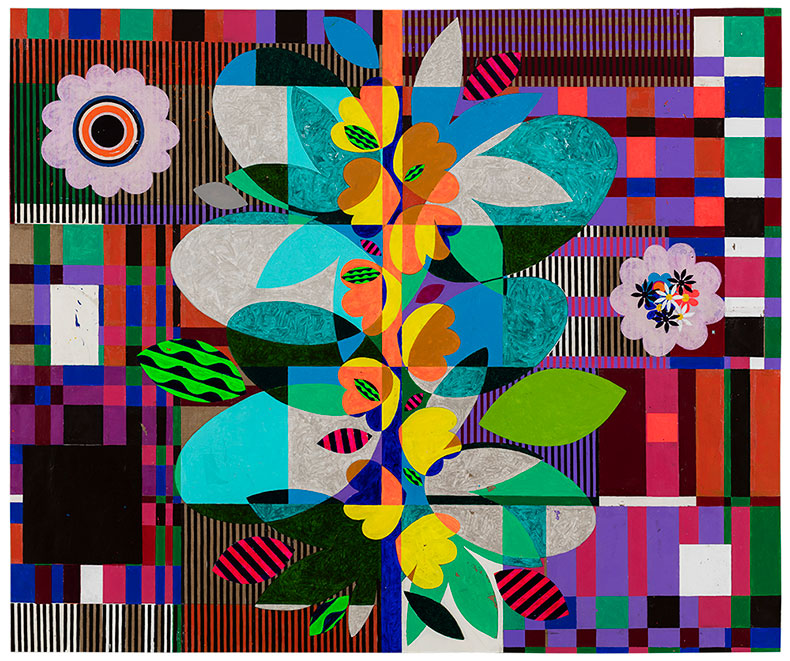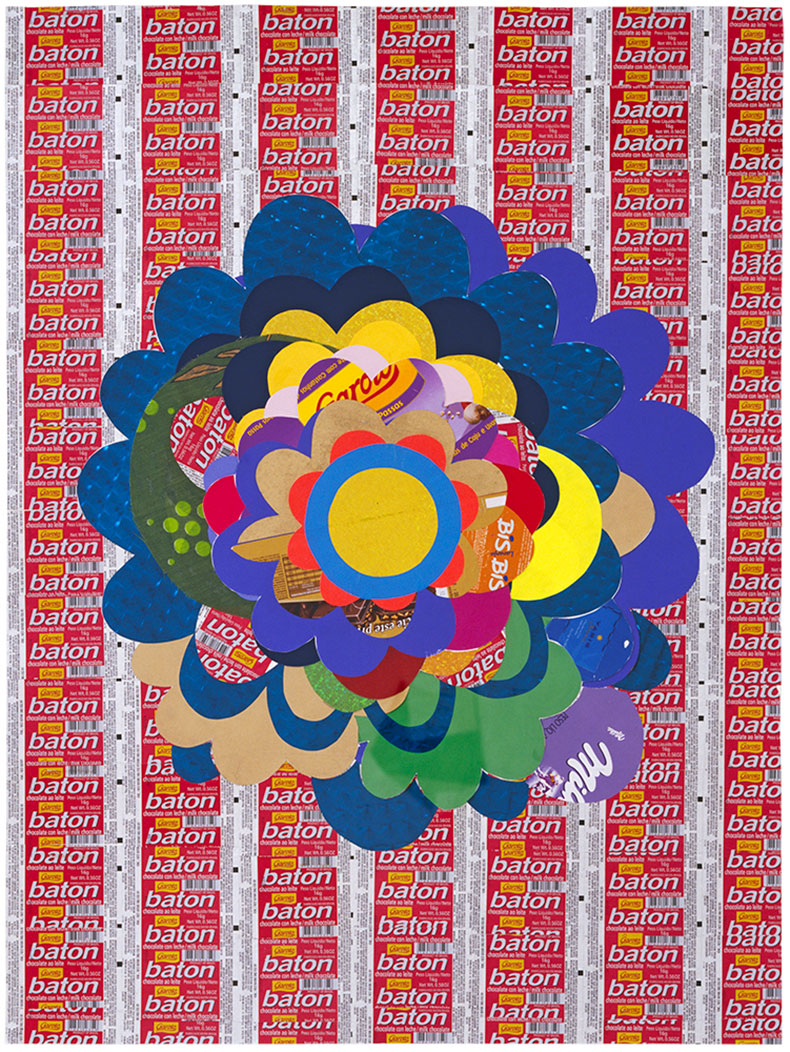Margate is not often mistaken for Rio de Janeiro. But Beatriz Milhazes’ solo exhibition at Turner Contemporary, titled ‘Maresias’ – literally ‘seaside’ in Portuguese and the name of a district in Rio – brings something of the climate and colour of Brazil to the Kentish coast.
The show extends back to 1989 and includes two new works made in 2023. Across the five rooms, arranged chronologically, we find Milhazes’ work developing through significant minor shifts rather than larger stylistic breaks. New elements enter her visual vocabulary – stripes, mandalas, pinwheels, flowers, labial folds – and supplement rather than replace the idiom she worked with before, making the works more and more expansive and energetic.
A Flor da banana (1993–94), Beatriz Milhazes. Photo: Stephen White; courtesy Ivor Braka Ltd; © Beatriz Milhazes Studio

In her earlier works, Milhazes’ affinity with the decorative arts is clear. Canvases such as Eu só queria entender por que ele fez isso (I just wanted to know why he did this) (1989) – the poetic, associational title is characteristic – don’t just look rather like paintings of textile designs; they also incorporate fabric elements into the acrylics. A Flor da banana (1993–94) is made entirely from acrylic paint on canvas but gives the impression of strings of thousands of beads encircling a bracelet or decorative chain. Each bead, a visual motif that features in many of Milhazes’ works, is painstakingly painted by hand, paying tribute to the unacknowledged creative history of women’s crafting by adapting its processes into a fine-art context.
Throughout, Milhazes’ work is united by a passion for rich and vivid colour. As she told Apollo in 2018, ‘colour is a way for me to create contrast, drama and mystery. Every work I create is a mathematical dream and colours are a way of emphasising that.’
Douradinha em cinza e marrom (Douradinha in grey and brown) (2016), Beatriz Milhazes. Photo: Manuel Águas & Pepe Schettino; © Beatriz Milhazes Studio

This sense of a ‘mathematical dream’ announces itself in the strange freehand geometries of her canvases. Circles that look perfectly regular at first glance turn out on closer inspection to be wobbly around the edges, the error and imperfection of the human hand visible in the finished work. Milhazes is also drawn to images that straddle the line between naturalistic representation and abstract formal patterning. Are the flowers in late canvases such as Douradinha em cinza e marrom (Douradinha in grey and brown) (2016) representations of real-world flora or allusions to flower patterns found in other media? The answer is surely that they are both – the effect is to create a multi-layered body of work that calls the process of representation into question even as it gives viewers the pleasure of it.
Leblon 3 (2004), Beatriz Milhazes. Photo: Eduardo Ortega; courtesy Galeria Fortes Vilaca; © Beatriz Milhazes Studio

The biggest room at the Turner is given over to Milhazes’ large-scale paintings from the early 21st century – the largest of them, Férias de verão (Summer holidays) (2005), stands at almost four metres wide. They show an artist at the height of her powers, able to master the challenge of large-scale composition without losing refinement of detail or structural coherence. But Milhazes is also capable of smaller, subtler effects. In the middle room of the gallery hang a selection of collages, many of them incorporating ephemera such as shopping bags or the sweet wrappers which form the background of Leblon 3 (2004). In that picture, six columns of red and white wrappers from the ‘Baton’ chocolate bar – a Brazilian staple – are overlaid with a large flower design, its dozens of multi-coloured petals made from a mixture of fabric cuttings and throwaway papers.
Installation view of O Esplendor (2023), Beatriz Milhazes at Turner Contemporary. Photo: Thierry Bal; courtesy Turner Contemporary

O Esplendor, the site-specific work Milhazes has made for the Sunley window, is another highlight. (It was originally created for a different site, the Long Museum Shanghai in 2021, but has been newly adapted for Turner Contemporary.) The vinyl patterns cut out and stuck on to the window in Matisse-like rhythmic simplicity are visible both from inside and outside the gallery, casting a different aspect each way you look at it. A series of suns at the top of each pane hangs above a background of waves overlaid with shapes that might be seeds, fruits or coffee beans, while the middle panel of five is largely left clear, to allow the real waves outside to show through the design, overlaid with a spangle of stars. If the English Channel and the sky of Margate are not quite as sparkling as Milhazes’ imagery, even on a summer’s day, they throw the intense vividness of her work into sharp relief.
‘Beatriz Milhazes: Maresias’ is at Turner Contemporary, Margate until 10 September.



